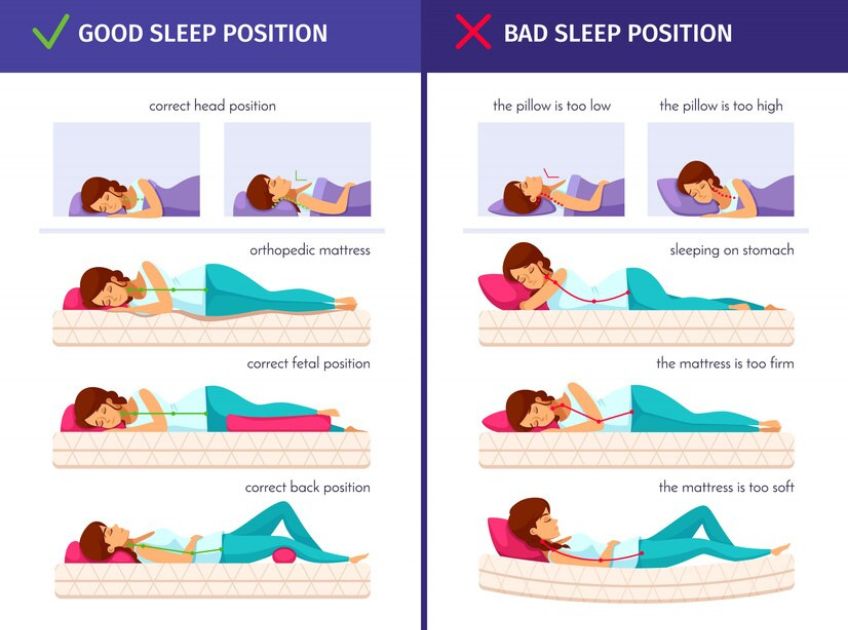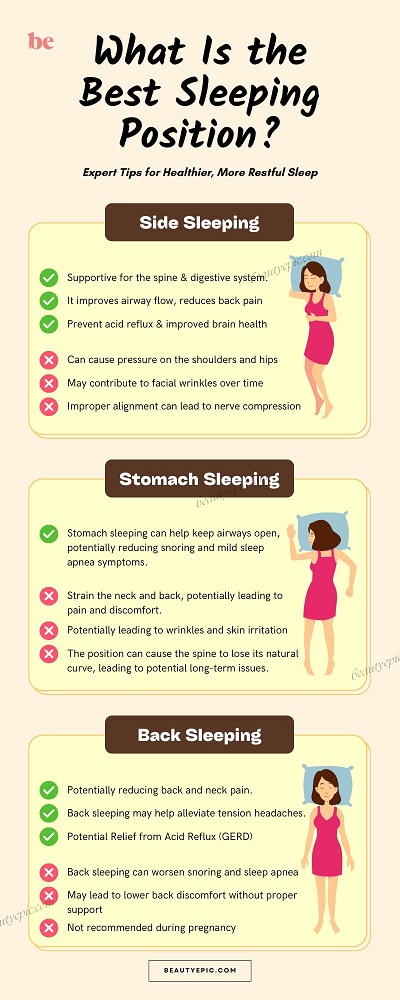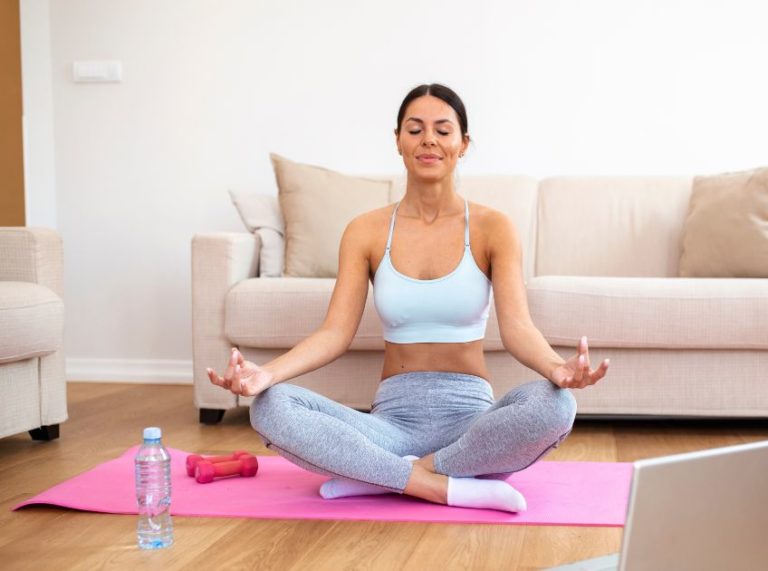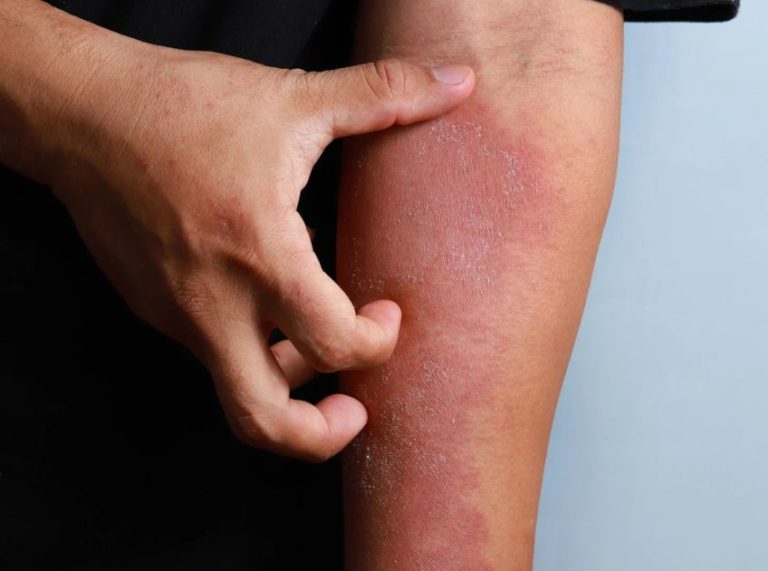
Important: This article is for informational purposes only. Please read our full disclaimer for more details.
The way you sleep affects far more than how rested you feel in the morning. Your sleeping position plays a major role in spinal alignment, digestion, breathing, and even heart health. Whether you’re a back, side, or stomach sleeper, adjusting your posture can significantly improve your well-being and help you wake up pain-free and energized.
Article Contains
- Why Sleep Posture Is Key to Rest and Recovery
- Finding the Right Fit: The Best Sleeping Position for Your Health Needs
- The Side Sleeper’s Guide: Comfort Meets Function
- Back Sleeping: The Posture of Spinal Purity
- Stomach Sleeping: The Most Controversial Position
- Other Sleeping Styles: Hybrid and Fetal Positions
- Can You Change Your Sleep Position? Yes—With Practice
Why Sleep Posture Is Key to Rest and Recovery
When your body is at rest, your muscles and joints should be in a neutral position. If your spine is twisted or unsupported, it can lead to aches, interrupted sleep, or even chronic pain. Studies from the Journal of Clinical Sleep Medicine highlight how poor sleep posture can aggravate conditions like GERD, back pain, and sleep apnea, affecting long-term health (1).
Finding the Right Fit: The Best Sleeping Position for Your Health Needs
When it comes to restful sleep, there’s no universal “best” position—what works for one person may not suit another, especially when specific health concerns are in play. The position you sleep in can have a direct impact on how your body functions and recovers overnight. Below, we break down the ideal sleeping positions for some common health issues, backed by science:
1. For Back Pain: Support Your Spine with Smart Pillow Placement
If you experience chronic or acute back pain, maintaining spinal alignment while you sleep is key. Two recommended positions are:
- Sleeping on your back with a pillow under your knees: This slightly elevates your legs and maintains the spine’s natural curve, helping to reduce pressure on your lower back.
- Sleeping on your side with a pillow between your knees: This prevents the upper leg from pulling the spine out of alignment, which can ease strain on the lower back and hips.
A 2017 study published in the Journal of Physical Therapy Science found that targeted pillow placement significantly reduces lumbar strain and enhances sleep comfort in individuals with lower back pain (2).
2. For Acid Reflux or GERD: Sleep on Your Left Side
If you struggle with acid reflux or GERD (gastroesophageal reflux disease), your sleeping position can either help or worsen symptoms. Experts recommend:
- Left-side sleeping: This position uses gravity to keep stomach acid from backing up into the esophagus. The esophageal sphincter sits above the stomach when lying on your left, making acid reflux less likely.
According to The American Journal of Gastroenterology, individuals who sleep on their left side experience fewer episodes of nighttime acid reflux compared to those who sleep on their right side or back (3).
3. For Sleep Apnea and Snoring: Side Sleeping is Best
People with obstructive sleep apnea or frequent snoring benefit from side sleeping, which keeps airways more open and reduces blockages during sleep.
- Side sleeping helps keep the tongue and soft tissues from collapsing into the airway, which is a common cause of both snoring and breathing interruptions.
- Avoid back sleeping, as it can worsen airway obstruction due to gravity pulling the tongue and soft palate backward.
A review in the journal Chest highlighted that individuals with positional sleep apnea had a 50% reduction in apnea events when they switched from back to side sleeping (4).
4. For Heart Health: Consider Left Side Sleeping
The effect of sleep position on heart health is subtle but potentially significant, particularly for those with cardiovascular concerns:
- Sleeping on your left side may reduce pressure on the heart, enhance blood circulation, and improve lymphatic drainage.
- Some heart failure patients, however, may feel more comfortable on the right side, depending on individual symptoms.
A 2018 report in the Journal of Clinical Sleep Medicine suggests that left-side sleeping may support cardiac function and blood flow, though more research is needed to determine its universal effectiveness (5).
The Side Sleeper’s Guide: Comfort Meets Function
Why Side Sleeping Works
Side sleeping is the most popular position and often the most supportive for the spine and digestive system. It improves airway flow, reduces back pain, and helps prevent acid reflux.
Drawbacks of Side Sleeping
- Can cause pressure on the shoulders and hips
- May contribute to facial wrinkles over time
- Improper alignment can lead to nerve compression
Left Side vs. Right Side: Which Is Better?
- Left Side: Best for digestion, heartburn relief, and lymph drainage
- Right Side: May worsen acid reflux, but can be more comfortable for some people with heart conditions
Pro Tip: Use a supportive pillow and place another between your knees to maintain hip and spine alignment.
Back Sleeping: The Posture of Spinal Purity
Why It Works
Sleeping on your back evenly distributes weight and keeps your spine in a neutral position—ideal for reducing neck and back strain.
Drawbacks of Back Sleeping
- Can worsen snoring and obstructive sleep apnea
- May lead to lower back discomfort without proper support
- Not ideal during pregnancy
Support Tip: Place a pillow under your knees and use a low-loft pillow for your head to protect the natural lumbar curve.
Stomach Sleeping: The Most Controversial Position
Why Some Still Prefer It
It may help with snoring and mild sleep apnea by keeping airways slightly open, but it’s typically discouraged.
Drawbacks of Stomach Sleeping
- Strains neck and lower back
- May restrict deep breathing
- Increases facial pressure, potentially causing wrinkles
How to Improve This Position
- Use a very thin pillow or none at all under your head
- Place a pillow under your pelvis to reduce lumbar pressure
- Try to gradually shift to side sleeping if pain persists
Other Sleeping Styles: Hybrid and Fetal Positions
The fetal position, where you sleep curled up on your side, is a common variation that’s especially helpful for people with herniated discs. However, tight curling may restrict diaphragmatic breathing, so a relaxed version is recommended.
Starfish or spread-out positions on the back may offer comfort, but should still be supported by the right mattress and pillows.
Can You Change Your Sleep Position? Yes—With Practice
While most people naturally gravitate to a specific position, you can train yourself to sleep differently using these tips:
- Use body pillows for support and positioning
- Try sleeping on a different side of the bed to encourage a new orientation
- Place tennis balls or rolled towels to discourage unwanted positions
- Start in the desired position and stay consistent each night
It may take a few weeks, but your body can adapt to a healthier position with time and patience.
Frequently Asked Questions (FAQ’S)
1. What’s the absolute healthiest sleeping position?
A. Side sleeping—particularly on the left—is generally best for digestion, heart health, and spine support. But back sleeping is great if snoring or apnea isn’t a concern.
2. Can sleeping in a bad position cause long-term issues?
A. Yes. Chronic poor posture during sleep can lead to neck and back problems, breathing issues, and digestive troubles.
3. Should I change my position if I wake up with numbness or pain?
A. Absolutely. Waking with numbness often indicates poor circulation or nerve compression—adjusting your sleep posture can help relieve this.
Final Thoughts
There’s no universal best sleeping position, but by understanding how each posture affects your health, you can choose the one that best suits your body’s needs. Whether it’s side sleeping for digestion, back sleeping for spinal alignment, or stomach sleeping with care, comfort combined with the right support makes all the difference.
















